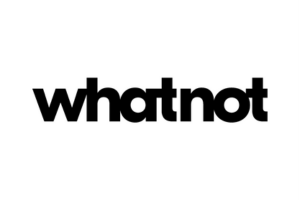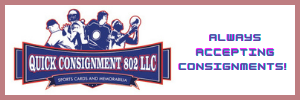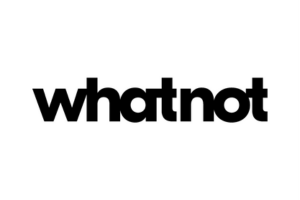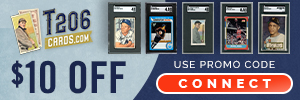
Interview with Joe Rubinstein
For over 35 years, Joe Rubinstein's ink has graced some of the greatest comic book covers, and pages ever printed. It's no coincidence that legendary comic book artist's such as Jack Kirby, and Frank Miller, have chosen Joe Rubinstein to help bring their characters to life.
His work on issues like the original Wolverine Mini Series, and The Official Handbook of The Marvel Universe have pushed boundaries, and helped lay the groundwork for what modern comic books are today. A well-known workaholic in the industry Joe is always striving to expand his skills, and take on new projects no matter how challenging they may be. In addition to being a pioneer in the world of comic books, Joe Rubinstein is also a pioneer of sketch cards.
I recently had the opportunity to sit down with the legendary inker to talk about life, art, and the pursuit of Triple D's.
T.C.C Let's start with fine art. Can you name a few artists that you studied with, or helped influence you?
J.R When I was eleven years old I studied at the Arts Students League with Arthur J. Foster, who was Hal Foster's son - the man who did the great Prince Valiant strip, and after he retired I studied with Anthony Polombo who was taught by Burne Hogarth. So there was an interesting comic book thread going through my life weather I choose it or not. Then when I was twenty by pure serendipity I found an artist named Burt Silverman, and Burt pretty much taught me everything I know today.
T.C.C How about a few from a comic book standpoint?
J.R When I was a kid I figured the way to be an artist was to draw exactly what was in front of you, and what looked real to me at the time was Neal Adams. I didn't know at the time that Neal was as stylized as Jack Kirby, but he fooled you by making you think it was real. So Neil is definitely, where it started for me. Then I studied with all the people that Neal studied with like Stan Drake, Joe Kubert, and I can't forget the great Illustrators as well like Al Williamson, and Angelo Torrez. As time went by the Filipino's arrived on the scene like Tony Dezuniga, and they were like bombshells on the scene. You couldn't help but to look, and study their work. The Brits as well like Jim Holdaway who did Modesty Blaise. Then there were the contemporaries as well, and from that came my favorite inker Klaus Janson, because Klaus is just so unpredictable, and innovative. We were both taught by Dick Giordano as well, who was Neal's inker.
T.CC What was your first comic?
J.R The first Job I received was a six-paged comic appropriately titled Tales of the Great Disaster. My first check was for $120.00, and I was getting $20.00 a page to ink in 1975. I found out later that my editor Gerry Conway who has since gone on to be the story editor for the T.V series Law and Order was giving me the lowest rate, because the other inkers were getting $23.00. It later turned out to be a backup in Kamandi the book that Jack Kirby created. When I was thirteen years old I started to be a gopher at Continuity Associates which was Neal Adams, and Dick Giordano studio in Manhattan. When I had spare time, I would practice my art with all the legendary artists that went through there. I asked a new guy by the name of Mike Netzer formally known as Mike Nasser if I could practice on a Xerox of some of his pencils. He told me to go ahead, and ink the real thing. He got his first job, and showed my ink samples to Gerry Conway who in turn gave me my first job.
T.C.C What role does an inker like yourself play in the world of comic book art?
J.R It's kinda comparable to a musician with a piece of music. He didn't invent the music, but he was handed this finished piece of work, and told to make something of it. Depending on what instrument I choose like a guitar for example it will change the sound off the music right off the bat. If I choose to emphasize a jazz style, or Spanish style this will change the mood of the music. The notes have not changed, but how I decided to make the music has. As an inker I certainly didn't want to do any harm and if I have someone who is really good I hopefully don't have to change a line, and just add a little polish. If I get someone who maybe needs a little work, and was instructed to help him out I will do everything I can. This can include moving anatomy around, emphasizing the curves on a girl, or fixing her nose because I don't think she is very pretty. Or maybe adding some more blacks to some scenes so what you are looking at is obviously perceived more by the viewer. So while I'm not creating anything I'm trying to be creative within what they have given me.
T.C.C What separates your style of inking from the rest?
J.R I don't pencil comics. I can draw a figure, but I don't have a certain style that I am married to. So I take pride that when I ink someone else's work I want very hard for them to shine through. If I am inking for Paul Smith I want it to be a Paul Smith job that looks good not a Joe Rubinstein that's lathered over Paul Smith.
T.C.C So you tend to accommodate the pencilers?
J.R: Yes because inkling is very boring! That is if you do it the same way every time. If you try to figure out why did a penciler do it this way, or how can I accommodate that look it will become more interesting.
T.C.C Have you ever penciled a comic book?
J.R No. I have done pin ups for the Official Handbook of The Marvel Universe which I inked for over twenty years. I have also been doing commissions through thecomicartfan.com. This is because I never developed my story telling skills. However now that I am doing sketch cards, and painted commissions I am going to emphasize how to make a picture happen, and take some lessons from guys like Alex Ross, and Steve Rude who make good story telling in their scenes. I can draw and paint very well, but now I want to learn to be a storyteller.
T.C.C Over the span of your career how many comics would you say you have inked?
J.R Too many to remember! A comic book is twenty-two pages, and in what was the most hellish month of my life, I inked 105 pages. I did so much work due in part that I wasn't married, didn't have children, had no distractions, and so I sat there and worked, worked, worked. People thought, “One guy can't be doing all this" I would get calls from editors saying I have this job for you “you are going to ink it yourself?" and I would say, “Yeah I'm going to ink it myself!" I have an assistant who fills in the blacks, because that doesn't take any artistic skills, one who touches up the panel boarders, and finally one who delivers the work for me. It was always me, but I was turning it out so much that the rumors started to flow that I had an army of inkers in the studio, and it just wasn't one person.
T.C.C You teamed up with Frank Miller over 25 years ago for the original Wolverine miniseries. What was it like working with Frank on this groundbreaking series?
J.R Frank was this skinny kid from Vermont, and I think he was a year or two older than me, but not much. He used to get eight pages on weird war stories from Joe Orlando. The work he was getting was enough to pay some bills, but generally frank wasn't rolling in money, and I used to buy him lunches when he came to Continuity Associates. I was living with my parents, and I didn't have to pay rent or anything. Frank knew that I was good at anatomy so he used to show me his early Daredevil, and Spider Man work. I used to re pencil his anatomy, and I don't want to overstate this I never re drew a whole figure, or a whole page, but I did help him out until he got comfortable on his own. So when he got his first issue of Daredevil, which was a bad smelling second-rate book that nobody cared about at the time I inked the cover as a favor to Frank. He knew that I was an established inker, and he was the new guy. I never would have imagined it was going to be the first ever-legendary Frank Miller Daredevil issue that it became. So frank called up and asked if I wanted to do Wolverine, and I agreed. At the time it was just another job to me. Like the classic actors of the past who made these excellent movies, we never thought we were doing anything special at the time.
T.C.C How was the Wolverine series created?
Frank would make a point to draw an issue a week, but they were lay outs not full pencil like on Daredevil. So there was a lot more left for me to do that's why those Wolverines don't look much like Daredevils from the same time period, and the fact that frank was going from Daredevil to Wolverine also contributed to this factor. The first issue took me eight weeks, which is a ridiculous amount of time. The second issue took me six weeks, the third issue four weeks, and the final issue I did in professional speed, because I just didn't know what I was doing. Now people come up to me and complement me on that series I thank them for it, but I honestly hated what I did on it. I was embarrassed what I did on it, because I was comparing it to what Klaus had done. So a couple of years ago I looked at it again, and instead of looking at what it should have been I looked at what it was. That's when I realized it wasn't that bad, and I sort of forgave myself. If you look at the cover of Wolverine number one the big shit eating grin I thought of Jack Nicholson for that cover. When you open up the first page for the rest of the series Wolverine is patterned after Clint Eastwood from the Eiger Sanctions. Frank sent me a book titled The Movies of Clint Eastwood, and said, “Look at this while you ink the series" so that's what I did.
T.C.C You are currently inking the Green Arrow and Black Canary for Mike Norton, and D.C Comics. What do you enjoy doing most on it?
J.R I'm currently on for one and a half more issues then Mike, and I will be let go. So issue number 24 will be our last. The big powers that be believed the book was to conventional looking, and they wanted to get a different look out of it entirely. Mike was a fan of my Captain America work I did with Byrne. So he said, “Do whatever you want." And what I wanted was a natural way for me to ink, kinda like what what I did with Captain America. Stan Drake the guy who influenced me with my pen work would draw the most beautiful girls ever, and the most beautiful bouncy blonde hair ever. So when I am inking The Black Canary I always have Stan in my head trying to get to that level never getting there, but always trying. So it's been fun because I've been able to do all these extra's, and know that my penciler trusts me to give him what he wants plus more.
T.C.C If you were handed a comic with blank pages what would your dream combination look like?
J.R It really depends on what the story is. I can't imagine Kevin Nolan or Adam Hughes ever doing anything wrong. If it were a love comic book, I wouldn't get David Finch, because David draws such gnarly intense stuff. I would get him for Batman or perhaps anything else. Jack Kirby the master of power proved he can draw love, war, and gangster comic books, but not every artist can write for every job. For instance if you give John Buscema a lay out of the Avengers Tom Palmer would be great, because his look really helped the superhero thing. If that issue was Conan Tom Palmer in my opinion would be a little to clean, but when Tony Dezuniga inked John Buscema in Conan it was unbelievable. It was so powerful, and so textured in its scope that if Tony was asked to do the Avengers it would look great, but not as good as Tom Palmer. So once again, not everybody is right for every job. There was a job that never happened, and I would have killed for it to have happened. If they could have got a John Buscema to pencil a Conan issue, and got Joe Kubert to ink it that would have been unbelievable. As far as an unimaginable dream combination if Frank Franzetta would come back and do a Conan issue, and Stan Drake with an issue of The Black Canary. Both of whom drew in ink a perfect combination on to itself.
T.C.C A majority of your assistants have gone on to successful professional careers. Not only are you an excellent teacher, but also a mentor. Where does this influence come from?
J.R I teach drawing and painting away from comic books, and many of my students would tell me I was the best teacher they ever had. I wasn't the best artist they ever had, but the best teacher, and that's because I had some crappy teachers. A majority of them were abusive, and belittled the students. I am aware of how debilitating that is and I don't do that to my students. I try to remember what it is that we are here for, and that is to have fun. I constantly try reminding people that when they started doing this it was supposed to be fun. Some students lose sight of it, because of all the years of frustrating workshops and money. I am very verbose, and since I talk a lot (not really), my students get a ton of information. I think that's another reason my assistants become pro's, because I explain it, and work it out. Neal Adams hardly taught me anything, because Neil just couldn't be bothered. I would ask Neal how to do something, and he would tell me to work it out. I would go to Dick Giordano, and it would be just the opposite he would tell me how to. So that's were the influence came from.
T.C.C Your career has spanned over thirty-five years, and has been a very successful one that continues as we speak. Like any successful career, it is bound to have downturns. Can you share a few?
J.R Well the industry took a big downturn in the late nineties, and all the old hats, or dinosaurs like myself had a hard time finding work. It seemed everyone wanted the new fresh discovery, and at the time I felt like a new Joe Rubinstein, because there was such a huge misconception on what it was I could actually do. I have done jobs in a more contemporary style, and nobody even knew it was me. I think one of the biggest downs is the misconception of me that I don't do my own work, and the ones who know I do my work think I do old-fashioned work. I feel like I have to always convince them that's not the case, and I can do other styles of art as well.
T.C.C Lets talk current work; over the past several weeks, I was fortunate enough to have viewed a large variety of your personal work. The sketch cards of Princess Leigh and of Harmony took me by surprise. Not only where they uniquely painted, but incredibly detailed for such a small piece. How was each piece painted, and how did the two come about?
J.R I have been painting sketch cards for Rittenhouse Press, as well as for Dynamic Forces I did some Lone Ranger cards for them, but primarily I am currently working for Rittenhouse, and they expect a lot of them. So when I do advertising storyboards the fastest easiest way is to use black markers, and colored markers to do the artwork. So that's how I did those cards, because that was my experience, and I knew it would go rapidly. What I didn't know existed was the collectors market, and the people who collected the A.P the artist's proof. So when people started to ask me for them I thought well I'm not getting the look I really want with markers, and I wasn't sure ink or water colors would work for what I wanted to produce. I always toyed with watercolors here, and there, but I never did any full-blown art. So I thought I would use the sketch cards as an opportunity to do water color art. So I started with this ten-colored children's set, because, I wasn't going to do anything fancy. My palette was actually a plastic plate, and the top of a plastic lid, and I used the brushes I had lying around. I slowly started to get the hang of it. This one collector wanted five different pieces from me, and Princess Leigh, and Harmony were two of them.
T.C.C You are obviously are taking a different approach - one not seen in the world of sketch cards.
J.R Up until nine months ago I never even knew this world existed. I knew there were baseball cards, and printed cards like Indiana Jones. Since I have been a portrait guy a majority of my life any way it just seemed like a natural evolution to paint some of these people. Now I'm just trying to figure out how to be a better water colorist, and how to add more personality to them. You can take watercolors, and produce beautiful artwork with it, but I want to be somebody who has a certain bravado or play. I have since then been more aware of the sketch card market out there, and going to eBay to see the kind of stuff that people are collecting.
T.C.C Lets talk about the visually intense sketch card of Bizzaro entitled The Bizarre Experiment. Incredible doesn't say enough for this card, and in my opinion, it has just raised the bar in the world of sketch card artwork.
J.R Alex Ross who is one of the best at painted superhero work over the last twenty years has a book of his work, and I studied it, because I wanted to learn how to do this stuff. Inside there are several photograph's of statues of Alex's work that I think Alex made, or were made of Alex work for people to collect. So there was a photograph of a Bizzaro piece not a painting, but a photograph so I looked at it, and said, “thanks Alex for doing my reference work for me" I didn't want to do an Alex Ross imitation, because we have a great Alex Ross already. So I thought well I'm not going to do a plain factual portrait of Bizzaro who is Bizzaro. So I began to get different ideas on how to intensify the ugliness, and how to focus your eyes to where they need to go. If you look at it, an awful lot of the edges of him are gone so you are pretty much forced to look at his ugly face. I made a point of letting every accident, drip, and blob exist, because I thought it added to the ugly texture of skin on his face.
T.C.C So your approach was to intentionally make mistakes?
J.R Well I wanted to amplify the intensity of who this guy is. Just like when I did Leah that's was done in a very understated approach, because she is a very beautiful woman. You don't want the approach to be noticed you want the person to be noticed. You have to change your approach for the subject matter, and Bernie Krigsteine used to do this a lot. When he would do an opium job he would do it in a very sketchy and dreamy way, and would change to something very solid depending on the subject matter.
T.C.C Speaking of Bernard Krigstiene what was it like studying alongside the legendary comic book illustrator at the High School of Art in N.Y?
J.R We fought a lot. I was a punk that wanted to do it my way, and I was flabbergasted that the man who fought the D.C system to do it his way was so authoritative now that he was in charge, but isn't that always the way. Maybe I was a little too angry then, and it would be nice to go back, and tell him I'm sorry I get it now. As a physical teacher someone that would teach you to draw, and paint he wasn't that type of a guy. He did do an interesting exercise where if the model was standing in front of you with a three quarter turn you where supposed to learn how to draw them from the other side that you couldn't see. I think that helped Bernie draw his figures in comic books out of his head.
T.C.C What a lot of people may not realize is that Joe Rubinstein is also an actor?
J.R Actor? (Laughing) I have attended acting school for a long time, and I got a nothing little role in Law in Order Criminal Intent where I played a sketch artist doing a drawing of a women on the street. As it turned out most of the scenes were shot right to my left, and I am in the majority of the scenes drawing. I moved to L.A and they wanted to use my art for an episode of Entourage set at the San Diego Comic Con. I told them that they could use my art, but you have to hire me to. So I was hired to be a comic book artist sitting there, and later I'm one of the guys hanging out with the Xena character asking her to tell stories. Acting is as far away from staying at home, and painting pictures as you can get.
T.C.C You recently agreed to do an exclusive sketch card for this interview. I threw the names of four very popular players at you: Derek Jeter, Albert Pujols, Evan Longoria, and Tim Lincecum. The end result was a water colored masterpiece of Yankee Captain Derek Jeter. How on earth did you get so much detail on such a small piece of cardboard?
J.R Well here's the trick make them think there is a lot of detail, because a lot of detail is overwhelming. If the detail is put in the right spot to attract attention your mind thinks there is more detail then there really is. Pretend you are watching a movie - let's say Fever Pitch for example. If they are filming a section of the stands you would naturally assume there are ten thousand people everywhere, but just beyond camera range there is nobody! There is just no reason for more people to be there. This the case with the Jeter card I just put the detail where you need to see it, and then I even it out in other places.
T.C.C From what I have heard you are quite the storyteller. What do you say we end this interview with a good one?
J.R I used to ink a book called The Justice League of America, and there was a character called Power Girl. She was kinda like Super Girl, and of course, she wore a very tight form fitting costume. She ended up having what I think are the biggest breasts in comic book history. The reason for that is when Wally Woods a legendary comic book artist who worked for D.C got this assignment he said “see that character I'm going to make her breasts bigger every issue until someone stops me" I'm sure you can imagine why we stopped at issue ten.
T.C.C You can check out the Comic Art Gallery of Joe Rubinstein at ComicArtFans.com. Thanks, Joe!
Here's a look at some of Joe Rubinstein's work:
 | Making purchases through affiliate links can earn the site a commission |









































Joe Rubinstein
Jay,
Please write me at jjr6658 (at) aol.com. I need to ask you a question or two.
Thanks.
Joe